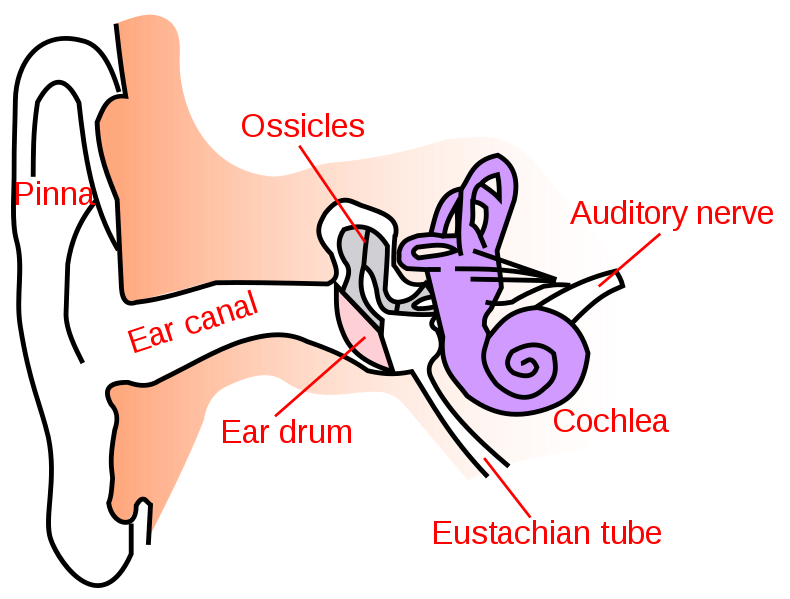Coming to Terms with Hearing Loss
Can you imagine living without being able to hear? How would you communicate? In this blog, we will look at the causes of hearing impairment, and how hundreds of thousands of sufferers across the world cope with their situation and go on to live rich and fulfilling lives.
To start off, let’s look at how hearing works. As we have all learned in early biology classes at school, sound travels in waves, and travels through the auditory canals of our ears where it meets the eardrum. The vibrations caused are then amplified by three small bones called ossicles on the middle ear. These amplified vibrations are then picked up by small hair-like cells call cochlea, which transmit data along auditory nerves to the brain. The brain, in turn, processes the data, and those with functional hearing will interpret the data as sound.
The inner ear is home to some of the most delicate bones in the body, and damage to the eardrum or middle ear can cause hearing loss and deafness in a range of ways.

There are several levels of hearing impairment, which impact people in different ways:
Hearing loss: This is a reduced ability to hear sounds in the same way as other people.
Deafness: This occurs when a person cannot understand speech through hearing, even when sound is amplified.
Profound deafness: This refers to a total lack of hearing. An individual with profound deafness is unable to detect sound at all.
The severity of hearing impairment is categorized by how much louder volumes need to be set at before they can detect a sound. Some people define profoundly deaf and totally deaf in the same way, while others say that a diagnosis of profound deafness is the end of the hearing spectrum.
Causes
Hearing loss can be caused by several factors, including disease or trauma. It can also be caused by genetic defects which may or may not be apparent at birth. In my personal experience, my hearing loss was gradual, but is due to a combination of genetics and a history of ear infections as a child.
Types of Hearing Loss
Hearing loss can be broadly categorized as
Conductive hearing loss: This means that the vibrations are not passing through from the outer ear to the inner ear, specifically the cochlea. This type can occur for many reasons, including:
- an excessive build-up of earwax
- glue ear
- an ear infection with inflammation and fluid buildup
- a perforated eardrum
- malfunction of the ossicles
- a defective eardrum
Ear infections can leave scar tissue, which might reduce eardrum function. The ossicles may become impaired as a result of infection, trauma, or fusing together in a condition known as ankylosis.
Sensorineural hearing loss: This is hearing loss is caused by dysfunction of the inner ear, the cochlea, auditory nerve, or brain damage. This kind of hearing loss is normally due to damaged hair cells in the cochlea. As humans grow older, hair cells lose some of their function, and hearing deteriorates. Long-term exposure to loud noises, especially high-frequency sounds, is another common reason for hair cell damage. Damaged hair cells cannot be replaced. Currently, research is looking into using stem cells to grow new hair cells. Sensorineural total deafness may occur as a result of congenital deformities, inner ear infections, or head trauma.
Mixed hearing loss: This is a combination of conductive and sensorineural hearing loss. Long-term ear infections can damage both the eardrum and the ossicles. Sometimes, surgical intervention may restore hearing, but it is not always effective.

The Impact of Hearing Impairment on Communication
Not being able to hear can have different impacts on your ability to communicate depending on then the loss occurs. In cases of prelingual deafness, or deafness prior to learning how to speak or understand speech, they tend to have a slower language development compared to their hearing peers. Oral language and the ability to use social cues are very closely interrelated. That is why children with hearing loss, especially those with severe symptoms, may not only experience delayed language development, but also slower social development. As a result, children with prelingual deafness risk becoming socially isolated, unless they attend a school that has a well-run special needs department with other children who have the same condition.
Those with post-lingual deafness, or going deaf after language skills have fully developed, tend to lose their hearing gradually, and are able to make changes – this is assuming that they and their immediate surroundings acknowledge the issue in the first place. They might have to become familiar with new equipment, undergo surgery, learn sign language and lip reading, and use various communication devices.
A feeling of isolation is a common problem, which can sometimes lead to depression and loneliness. A person with post-lingual hearing loss also must face the often-distressing process of coming to terms with a disability. The condition may also pose challenges for household members, loved ones, and close friends, who have to adapt to the hearing loss.
Miscommunication can place a strain on relationships, not only for the person with the hearing impairment, but also the people around them. If the hearing loss is gradual and has not yet been diagnosed, family members may mistakenly believe that the individual with the condition is becoming more distant.
Losing your hearing can be very distressing, but it does not mean the end of the world, just that some adjustments are needed. If you or someone you know have a hearing loss, how have you come to accept it? Let us know in the comments below.



